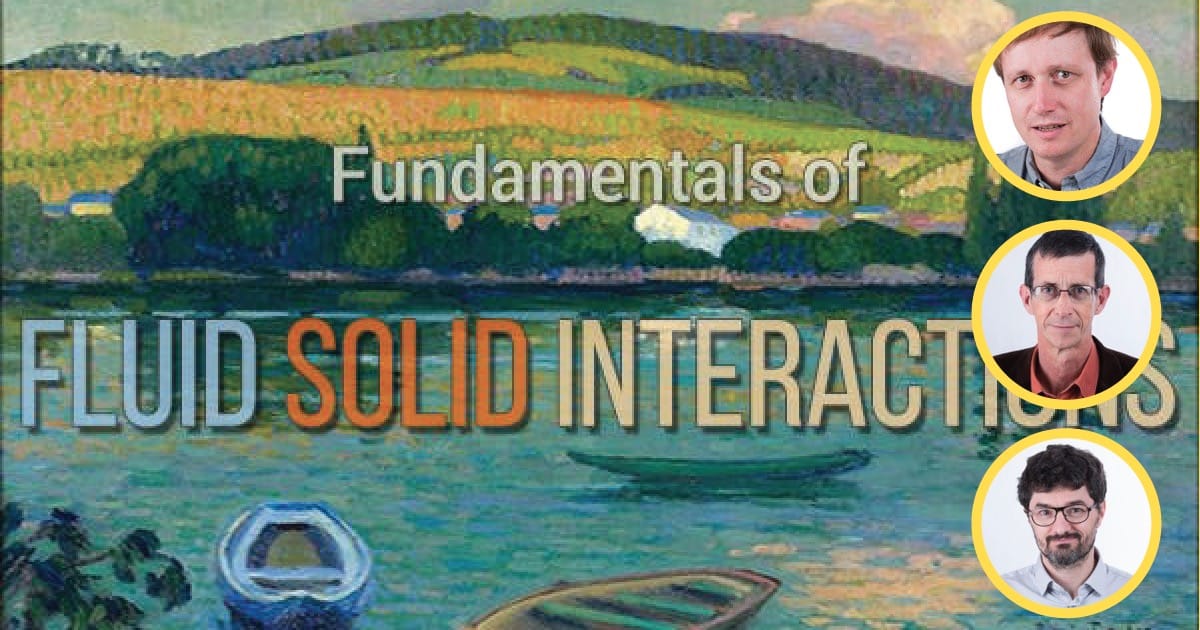About this course
What is fluid-solid interactions? It is what happens when the motions of a fluid and of a solid are somehow coupled. This happens all the time, around you when leaves flutter in the wind, inside you when your heart beats, above you when wings of a plane vibrate, under the sea… The idea behind this MOOC is to give you the basic tools to be able to predict and eventually mitigate things called flutter, galloping, sloshing, vortex-induced vibrations, added mass, to cite a few. We are going to consider any possible domains of applications such as civil engineering, aerospace engineering, nuclear engineering, ocean engineering, biomechanics, and even food processing ! This is why we called the course “Fundamentals of Fluid Solid Interactions ”. There are so many phenomena and so many models that we need to work together on the basic mechanisms . If you want to see how fluid-solid interactions work, and be able to use that knowledge, join us ! The first session of the course was run in early 2016, with learners from over 100 countries. It is now available with subtitles, in English and now in Chinese.
Teachers
- Emmanuel de Langre Professor Mechanics
- Xavier Amandolese LecturerMechanics
- Olivier Doaré ProfessorIMSIA, ENSTA Paristech
Course program: what you will learn in this course
Week 1 : Fundamentals
Welcome to the course 2 min
- 1.1 Coupling fluid and solid mechanics 8 min
- 1.2 The tool of dimensional analysis 13 min
- 1.3 Dimensionless numbers 11 min
- 1.4 Dimensional analysis of the interactions 9 min
- 1.5 Coupled equations for fluids and solids 8 min
- 1.6 Dimensionless coupled equations 8 min
- 1.7 Research report : poroelasticity 3 min
Week 2 : A solid with a still fluid
- 2.1 Small reduced velocities 8 min
- 2.2 Adapted dimensionless numbers 6 min
- 2.3 Small motion of the solid 12 min
- 2.4 Added stiffness 11 min
- 2.5 Added mass 11 min
- 2.6 Computing the added mass 12 min
- 2.7 Research report: elastocapillarity 5 min
Week 3 : Viscosity and gravity effects
- 3.1 Added damping 8 min
- 3.2 Memory effect 11 min
- Experiments : added mass and added damping 5 min
- 3.3 Sloshing 10 min
- 3.4 Coupling with sloshing 11 min
Experiments : eggs and bottles5 min
Week 4 : Coupling with a fast flow
- 4.1 Aeroelasticity approximation 13 min
- 4.2 Flow-induced static instability 11 min
- 4.3 Flow-induced dynamic instability 13 min
- 4.4 Coupled-mode flutter of an airfoil 13 min
- Experiments : coupled-mode flutter 4 min
Research report: foliage dynamics 5 min
Week 5 : Coupling with a slow flow
- 5.1 Pseudo-static aeroelasticity approximation 9 min
- 5.2 Flow-induced dynamic instability 7 min
- 5.3 Stall flutter of an airfoil 11 min
- 5.4 Drag and lift galloping of a bluff body 14 min
- Experiments : Galloping and stall flutter 5 min
Week 6 : Coupling with any flow
- 6.1 The garden hose instability 8 min
- 6.2 The fluid-conveying pendulum 12 min
- 6.3 A model for all fluid velocities 6 min
- 6.4 The fluid-conveying bi-pendulum 9 min
- Experiments : Fluid-conveying pipes 3 min
- 6.5 Vortex-induced vibrations 10 min
- 6.6 Lock-in10 min
- Research report : Energy harvesting 5 min
- A case of wind engineering (in French with English subtitles) 5 min
- Final video 3 min
